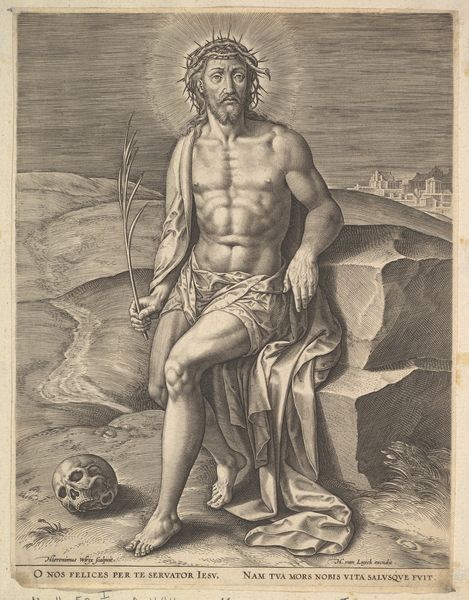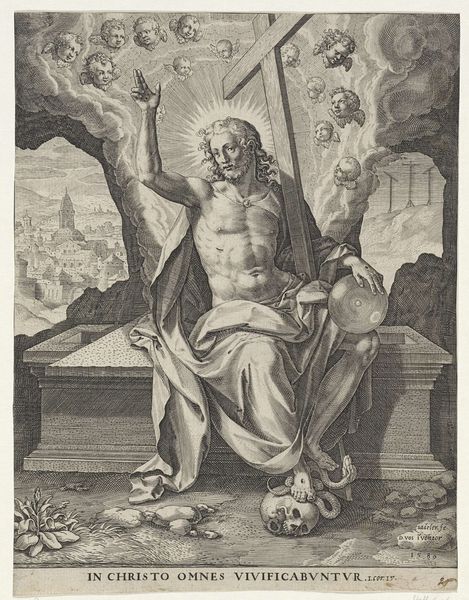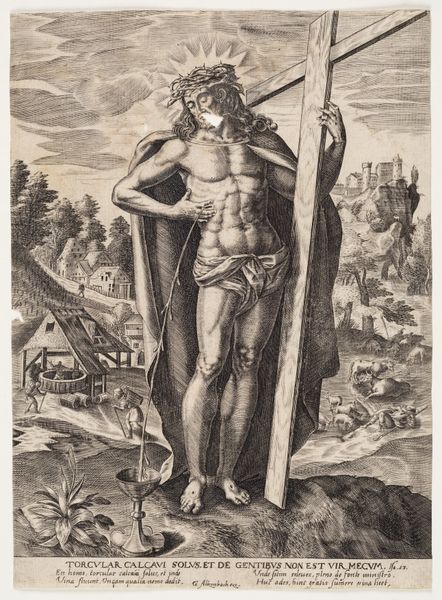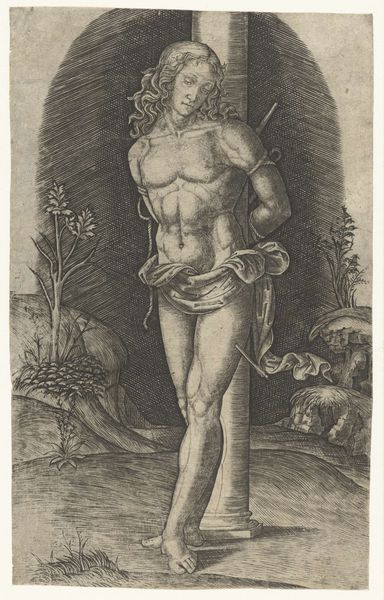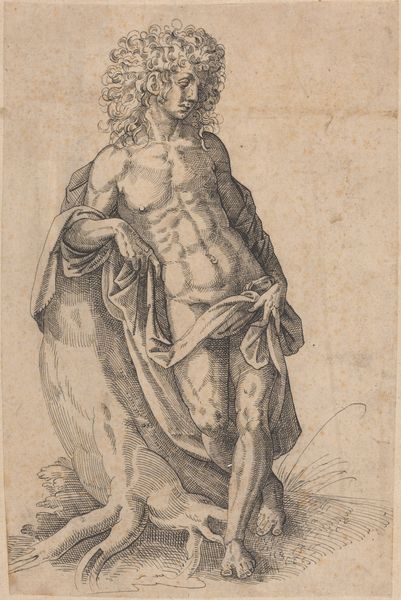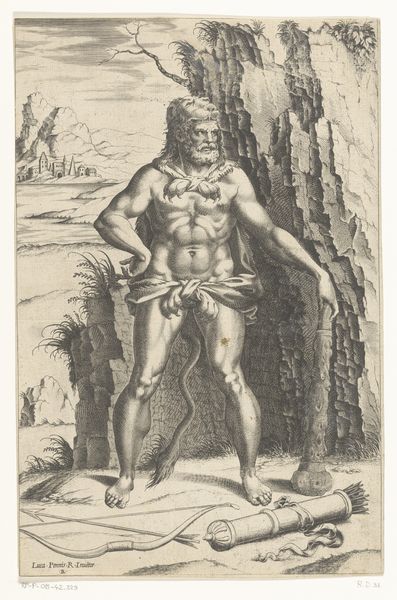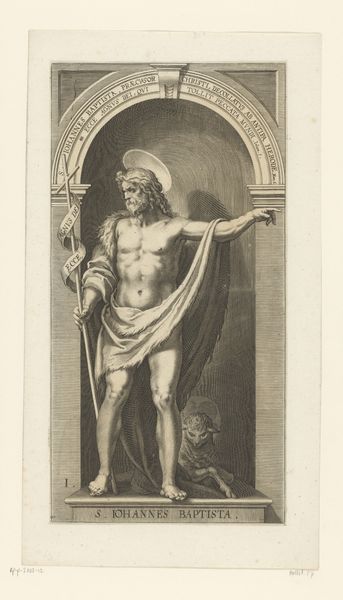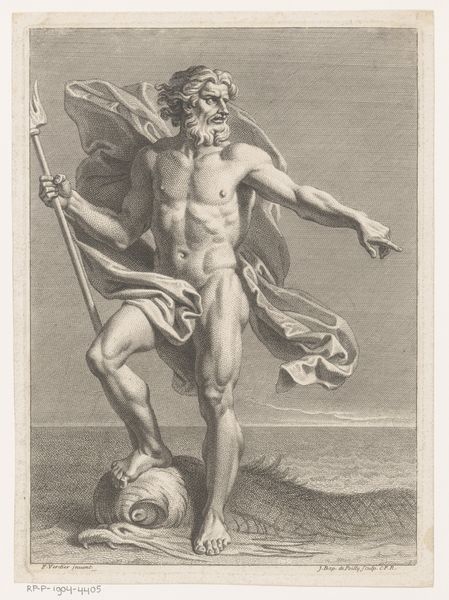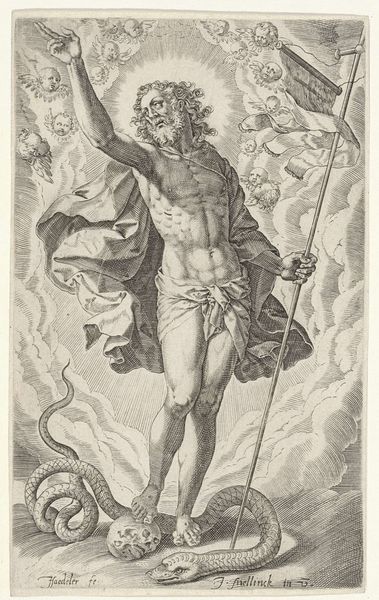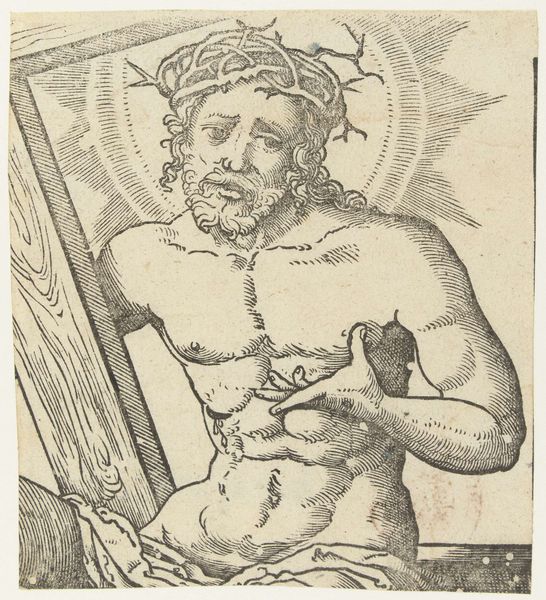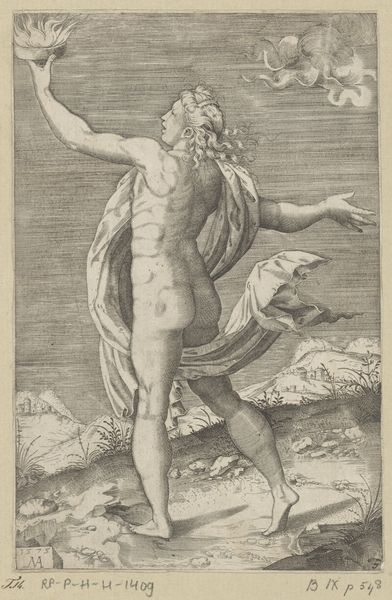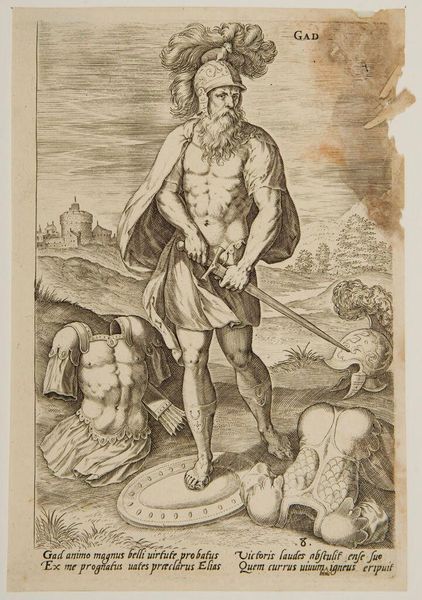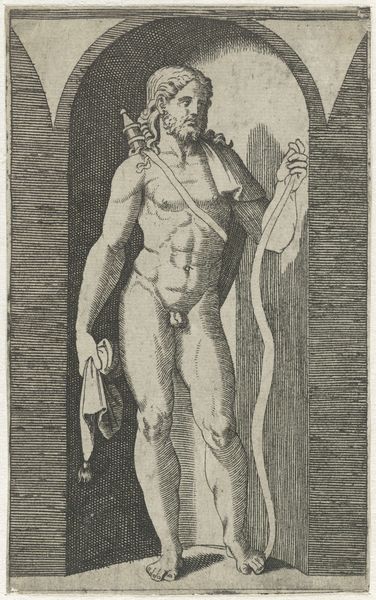
print, engraving
#
portrait
# print
#
figuration
#
11_renaissance
#
history-painting
#
nude
#
engraving
Dimensions: height 244 mm, width 182 mm
Copyright: Rijks Museum: Open Domain
Editor: Here we have Johann Hogenberg’s "Christus op de koude steen," an engraving dating from between 1594 and 1614. I’m immediately struck by the almost classical depiction of Christ, but there’s this raw vulnerability as well. What strikes you about this print? Curator: Well, looking at it through a historical lens, what immediately jumps out is the evolving visual language of religious imagery during the late Renaissance. The almost confrontational nudity, coupled with the symbols of the Passion – the crown of thorns, the skull – it’s not just about devotion; it's a carefully constructed message. Editor: A message about...? Curator: About suffering, about humanity. Notice how Hogenberg has chosen to portray Christ. Not as divine and untouchable, but muscular, weary. The political landscape of the time—the Reformation, the Counter-Reformation—was turbulent. The Catholic Church needed to reconnect with the populace, and depictions of a relatable, suffering Christ served that purpose. Think of it as strategic messaging through art. Editor: So, the artistic choices were, in a way, dictated by the social and political needs of the Church? Curator: Precisely. And who was consuming these images? Prints made art more accessible. Did this shift affect power dynamics between religious authorities and believers, with individual connection to religious experiences more popular and valued? That skull isn't just a symbol; it's a memento mori, a constant reminder of mortality accessible to many, prompting reflection and reinforcing the Church’s role as mediator. Editor: That's fascinating. I never thought about religious art as having such a direct socio-political function. Curator: It's all intertwined. Art, religion, politics – they constantly inform each other. The success of artists then was measured by their capability of using aesthetic messaging that aligned to contemporary institutional intentions. Editor: This really broadens my understanding. Thanks!
Comments
No comments
Be the first to comment and join the conversation on the ultimate creative platform.
